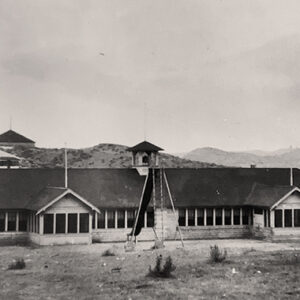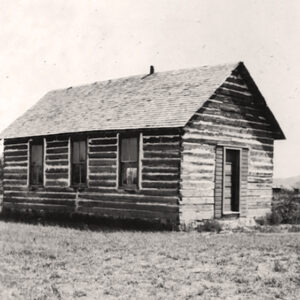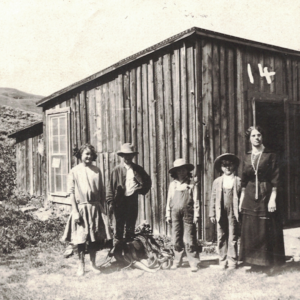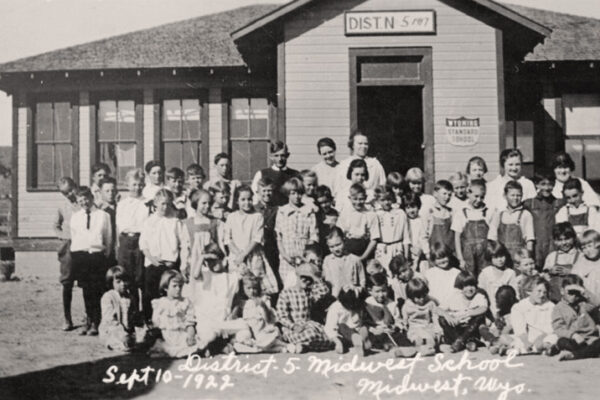
Midwest Schools
Midwest-Ohio Oil camp held school first, in 1913, and it was moved several times. Two years later, Midwest School was held in a sheep wagon in split sessions. The teacher sat on one side of the table with one child beside her and two across. The primary children came at 8:00 a.m., worked until 10:00 and then went home. The other children arrived on horseback, staying until 2.30 p.m. when the little ones returned for a second session. The
school ran until 1917.
The first permanent Midwest School was built in 1917. The two-room yellow building had thirty students and two teachers. Enrollment jumped to sixty-six and another room was added. The school was standardized in 1920. Money was raised for buses to bring students from the outlying areas when the weather was good. Just before Christmas in 1923, the school burned down. Only the piano was saved. Classes were held in the school garage and then in the Ohio community hall. A new school was built in 1924, and was called the Grass Creek School.
Grass Creek Schools
Charles M. Smith built a four-room school in 1924 for the Midwest School children. This new school would be called the Grass Creek School. The full basement was used as a lunchroom, and with the enrollment at over one hundred, a janitor and three teachers were hired. Other schools in the Grass Creek area were closed by 1930, and all efforts were concentrated on making Grass Creek School one of the best in the state. In 1932, it was the first in the state to be designated a superior school.
In 1951, an oil boom started. Four years later a large gym, more classrooms and restrooms had been added, with a library, science room, and showers in the basement. Band, physical education, and art classes were taught. Four brick teacherages were built. By 1962, Ohio Oil merged with another company, enrollment dropped, and the school closed in 1964.
Dickie, Ackerman and Rankine (Ever Quiet) Schools
The Dickie School was built in 1921 and was named after James and David Dickie. It was located at the brother’s ranch on Gooseberry Creek. There were two rooms in the school: one for the teacherage, the other for the school. It ran until the Ackerman School started in 1922 and ran intermittently until 1929. Rankine School (Ever Quiet) started in 1924 at the Rankine Ranch. Only the Rankine children attended. In what was the smallest high school in county history, Edna Rankine was the only high schooler. Her father raised objections with the Hot Springs County High School board because they would not let Edna take her classes at home. He finally convinced them that traveling 45 miles a day to Thermopolis was out of the question, and the family did not want Edna to board in town. Both reached an agreement based on Edna passing rigid tests to prove she was doing the proper work. By 1930, the school was no longer needed.
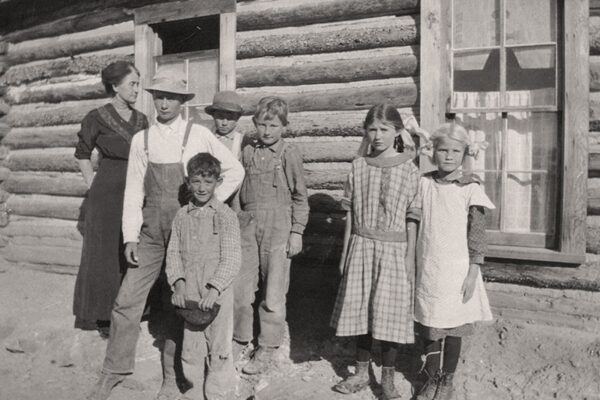
The Moon and Cottonwood Schools
The first school in the Grass Creek area was the Moon School. It was a rock dugout lined with whitewashed muslin, located on the Moon Ranch, in 1906. There were six students the first year. Later, a school was built, still on the Moon Ranch, which ran until 1918.
The Cottonwood School. In 1909, the first school term was held on Cottonwood. By 1910, the Cottonwood families decided a school building was needed. They attended a school meeting at Embar to present their request to the officials. After weighing the request, $200 was allocated to build a school and maintain it for three months.
Everyone got together to build and equip the school. They hauled logs from the mountains for the building, and used rough, unplaned boards for the floor. Books and desks came from the “old Embar schoolhouse” and a slated cloth was the blackboard. The home-made fir flagpole, the tallest in the county, was so high the flag could be seen from the main road, a mile away. Because of the Cottonwood families’ efforts, the entire $200 was used for wages, with the teacher able to teach for five months instead of three. In 1914, an addition was put on for living quarters. When there were community gatherings, the cloth blackboard was rolled up to the celling, leaving a wide opening which made the two rooms into one. School was held into the late 1920s.
Punteney and Hamilton Dome Schools
School at Hamilton Dome proper began in 1920, in a small bunkhouse. Next, some of the Hamilton Dome students went to the “Cooperative School” located at the Punteney Ranch on Cottonwood Creek. But, problems arose almost immediately, and before long disagreements between school board members ended the Cooperative. By 1925, the Punteney School would be held intermittently at the Punteney Ranch.
The Western States Camp School, at Hamilton Dome oil field, was finished for the fall term in 1922. It was standardized in 1927. Only two students were enrolled, in 1930, but enrollment gradually increased through the years. In 1950, a new modern Hamilton Dome School was built. It was made with block, had two classrooms, teacherages, a lunchroom, and gym.
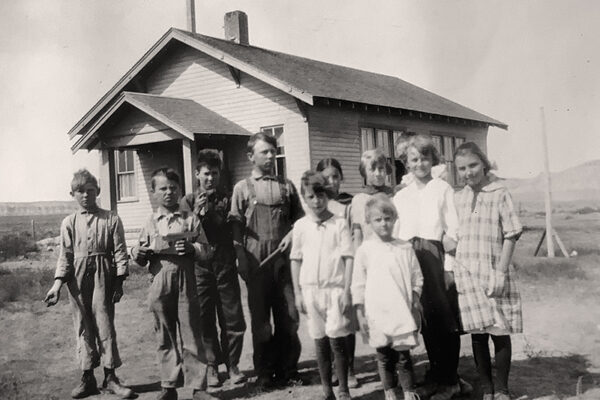
As enrollment continued to grow, the school joined the high school district in 1953. By 1964, more teacherages had been added, as well as more cooks, and bus drivers. Sometime between 1980-1986, the school was remodeled, stucco was put on the outside, windows were changed out, and it was remodeled inside. In 1978, the administration recommended closing the school because only four students attended. Residents of the area fought the move, and kindergarten through fourth grade continued to be held there until 1990, when the school was closed and the property and buildings sold.
Happy Hollow School
Happy Hollow School was built in 1921. It was painted grey, instead of the usual white. During the next few years, Hamilton Dome and Happy Hollow schools held contests in math and spelling on Friday afternoons. They had track events, and a Literary Society was organized and met twice a month, alternating between the two schools. In 1926, Happy Hollow became a standardized school. It ran until 1944, when the building was purchased by Sam Haynes, Jr. for a residence.


